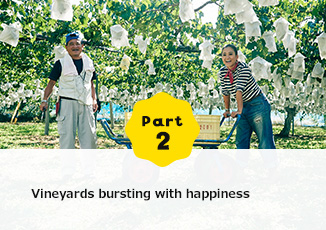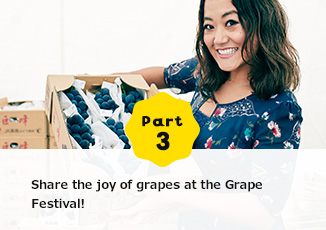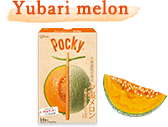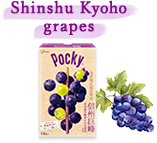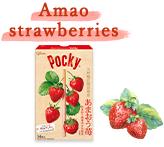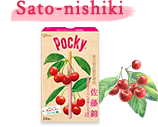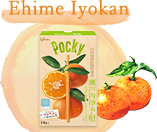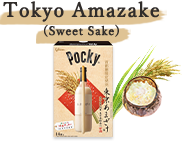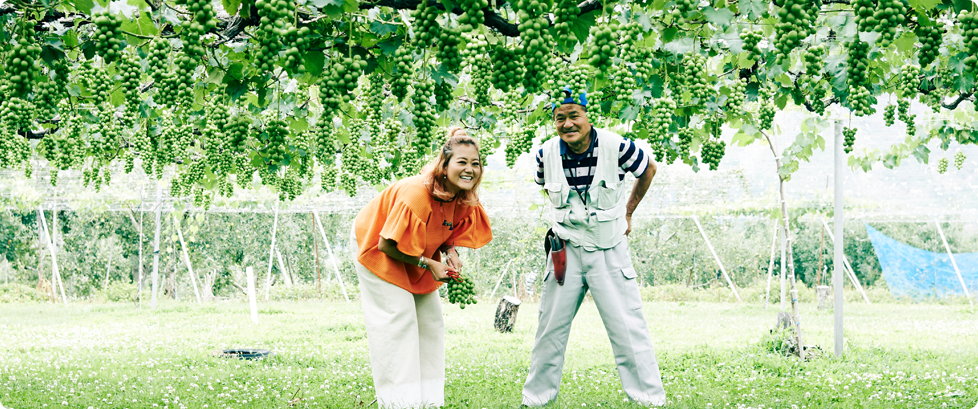
The Shinshu climate is quite fickle,
but this contributes to the sweetness of Kyoho Grapes.
These grapes are like drooping bundles of jewels.
The climate and natural environs of Shinshu contribute in major ways to giving each grape the right color and sweet taste.
There is one key contributor to the sweetness:
the temperature differential between morning and evening.
In summer, mornings and evenings are cool, with the afternoon getting much warmer.
This uniquely variable temperature of Shinshu is what imparts a rich sweetness to the Kyoho Grape.
“What’s it like shipping the grapes? Honestly, it’s kind of like sending your daughter off to be married.â€
Each bunch of Kyoho Grapes is bursting with fruit. This is a fruit in which you can share happiness by passing Grapes around with loved ones.
In this report, I visited a Shinshu Kyoho Grape farmer to get the scoop. My guide was a slightly bashful farmer holding a giant bunch of Kyoho Grapes. He has been farming them for over fifty years.
Each and every bunch is bursting with color and is sweet in flavor. Their shape is lovely and neat. He works hands-on with the fruit all year, and he says that he determines when to ship them out based on their color.
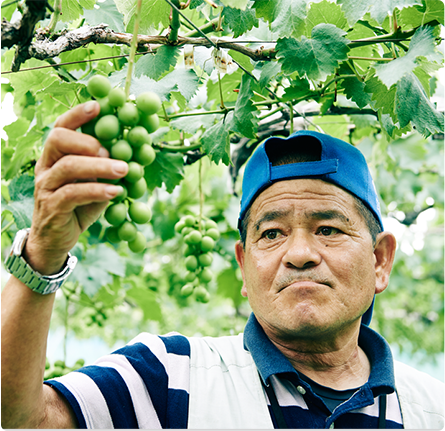
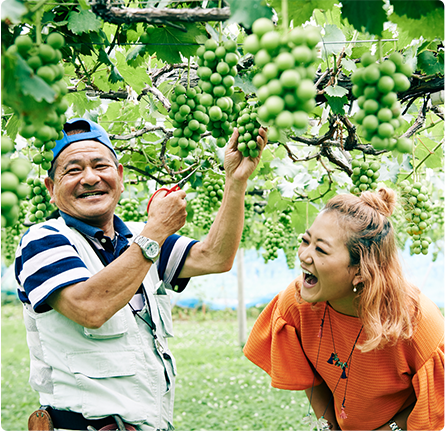
“The happiest thing is having people tell me they taste good, after all.â€
His farm is located in Takayamamura, Nagano. The soil here contains volcanic ash and stones, meaning it filters water well, so it is ideal for farming. “What are some of your own moments of shared happiness?†I asked him. “Well,†he said bashfully, “I’ve been doing this work a long time, so, I don’t know... that is, well, when people eat these and tell me they’re delicious!†The variable weather here fluctuates wildly from hot to cool. That, coupled with the love/hate relationship (but mostly love) of the farmer to the Grapes, makes the Shinshu Kyoho Grape special.
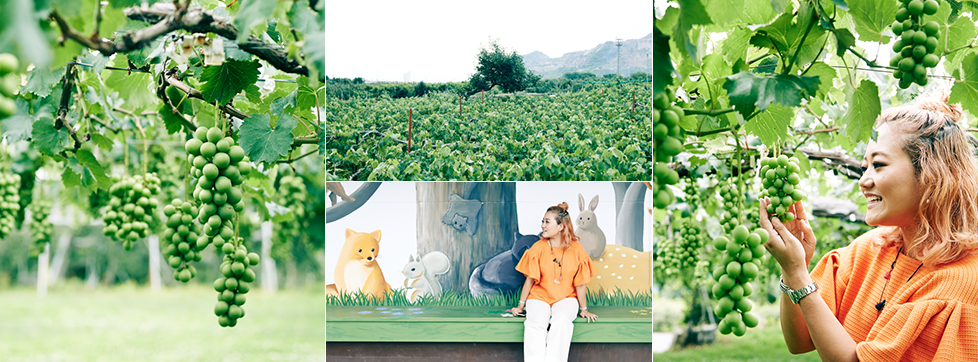
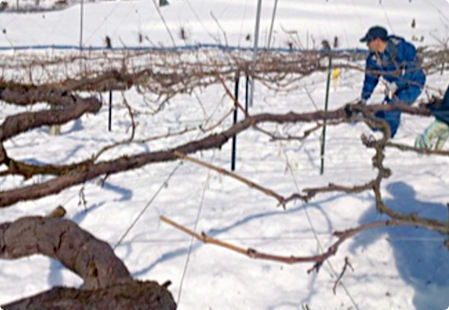
Pruning
The work begins in the midst of a deep snow cover. The farmers adjust the shape of the trees, considering where the grape bunches will sprout. The snow impedes movement through the vineyard, so just making one’s way down the line is a challenge.
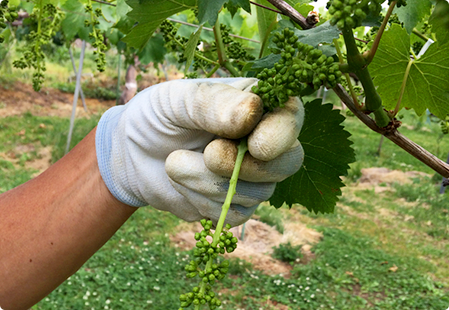
Cutting the bunches
This is a key step in determining the final shape of the grapes. When the flowers bloom, the buds are trimmed and a few centimeters are left at the tip of the bunch to dictate its general shape.

Bagging
Each bunch is individually bagged in order to protect it from the sun and birds.
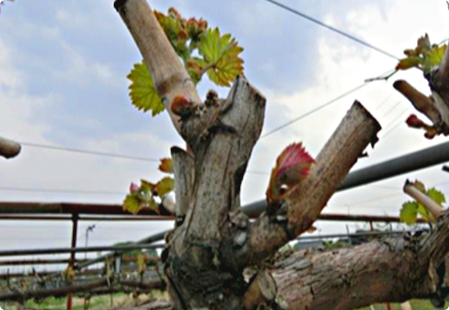
Bud pruning
Only the best buds are kept. This process shapes the bunches into healthy ones primed to grow and bear fruit.
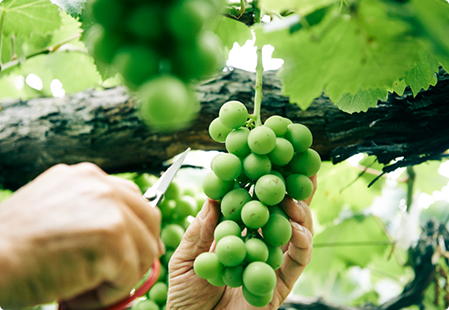
Picking
Once the fruit begins to plump up, the excess pieces are removed in order to keep the bunch consistent. The goal is to tweak the bunch so that it has a more classically attractive appearance. This requires years of experience!
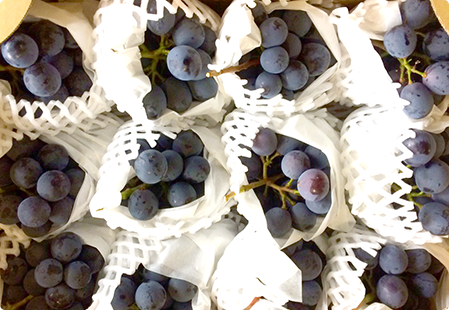
Harvest and shipment
The harvest is done early in the morning. The color and flavor are checked, with each bunch being carefully harvested. That same day, each bunch is then inspected, packed, and shipped.

The deep, deep purple of Kyoho Grapes sometimes appears almost black. It is a testament to their delicious, sweet flavor. Just looking at that color, you can almost taste them.
Color is a key determinant of the Kyoho Grape experience Did you know that this color is in fact imparted by the leaves? Each grape requires one leaf for coloring.
Without the leaves, the signature grape color cannot be achieved.
Surprisingly, the leaves work behind the scenes to make Shinshu Kyoho Grapes special.
This is a ton of work! It’s the busy season on vineyards!
I visited the farm right in the midst of the grape trimming season.
Farmers are busy year-round, but this season is particularly the toughest, involving tweaking each bunch by hand and covering them with bags. This was truly the peak of activity. This year, our farmer’s vineyard has between 4,000 and 5,000 bunches.
Naturally, he didn’t even stop working during my reporting. I got a chance to see how the work proceeds.

He works quickly and gingerly
Removing tiny grapes from the bunch by hand. Then, taking scissors in hand, he quickly spots areas where the fruit is too clustered together or would disturb the shape or quality of the whole bunch, deftly trimming them away at the stem. This is the result of years of experience. He works quickly and gently, handling the fruit with consummate ease. This is truly the result of fifty years of experience!
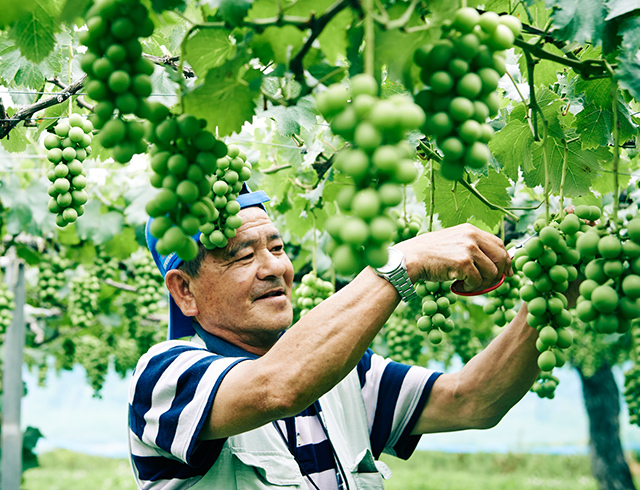
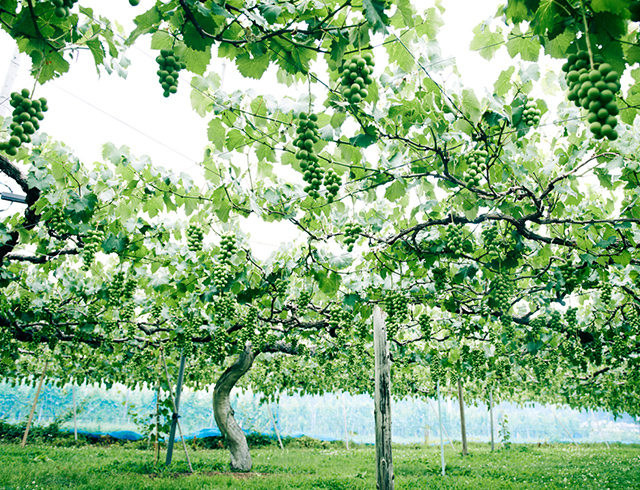
A single tree yields 600 bunches of Kyoho Grapes
Above us, grapes grow in every direction, as far as the eye can see.
About 600 grapes generally form on a single tree.
Seeing all of the leaves and branches of the vineyard interlinked is truly impressive.
A proud smile is happiness itself
“I’ve been doing it for decades, after all...†says the farmer, sharing precious tidbits on Shinshu Kyoho Grapes. “The best moment is when people say they’re delicious,†he says with a proud smile. Each and every careful step in the process, and that sense of pride behind the product, is what makes the grapes delicious. Each bunch is a gift of joy that you can share with others.
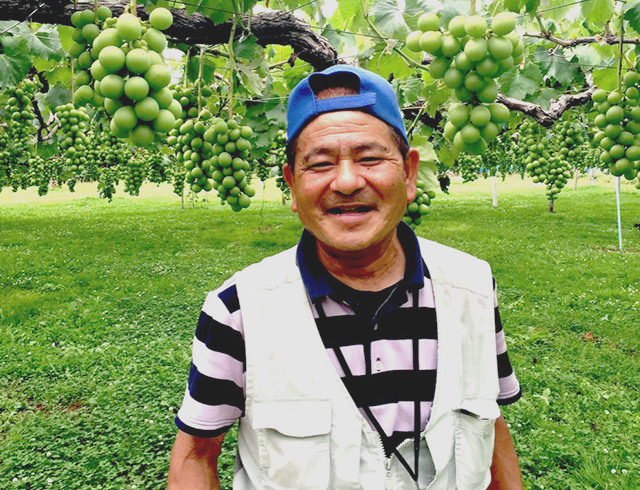
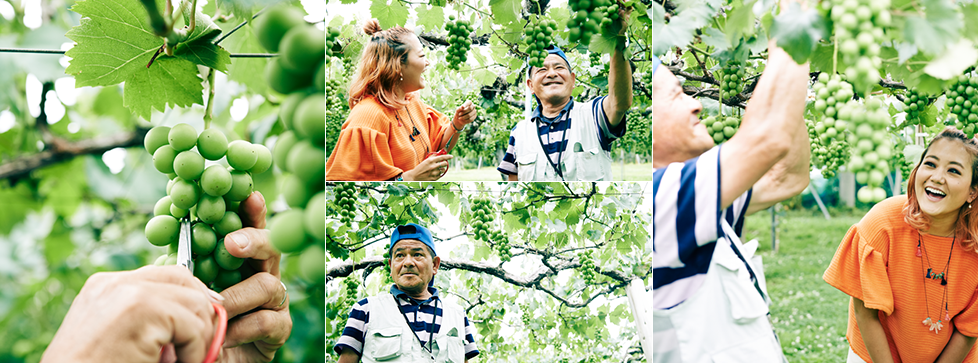

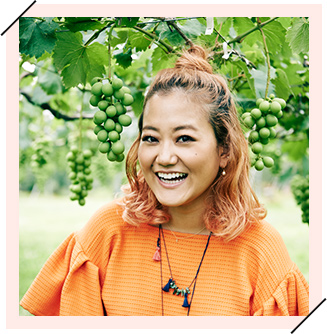
I was truly moved by the way the Kyoho Grape farmers were so passionate about their work.
Shinshu Kyoho Grape vineyards can be found amid the majesty of Nagano’s nature.
I was so impressed with the farmer’s attitude that I wanted to come back and help again!















